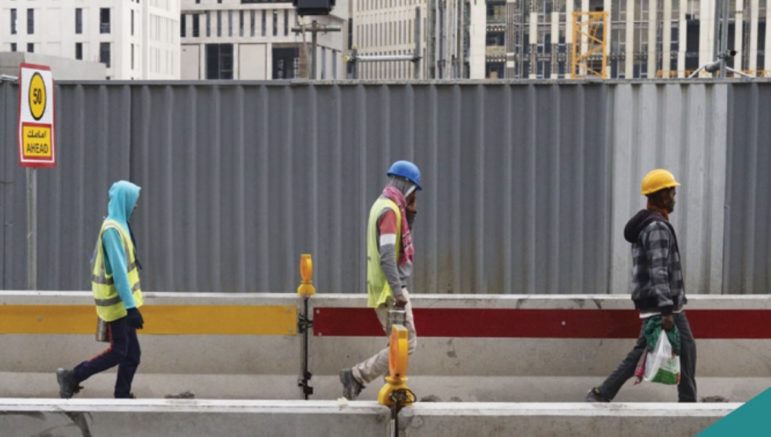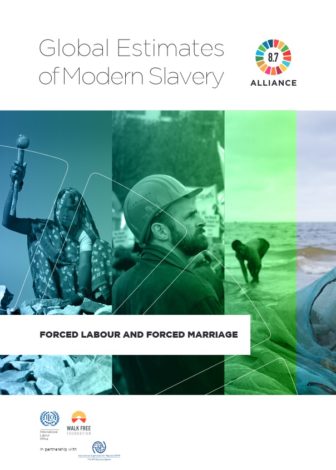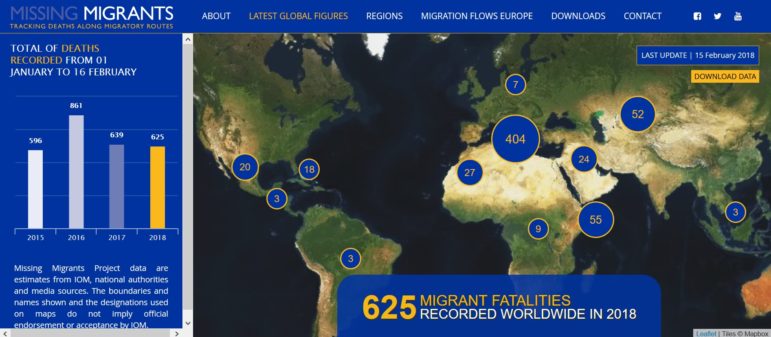

Statistics and Studies: Where is the Data?
Full guide here. العربية
Data on human trafficking, forced labor and irreegular migration is everywhere and nowhere at the same time. Incidents are reported regularly, but this information tends to be scattered across media outlets, government reports and the publications of civil society organizations.
 For journalists willing to put in the hours, rich data can be mined from archived local media reports, which are available online. Both media in origin and destination countries regularly report on the numbers of undocumented workers deported from a country, or incidents involving trafficked workers. Reports by local and international NGOs as well as records maintained by origin country embassies also offer a repository of information; access to this data will often require you to develop relationships with these entities, as much is not published online.
For journalists willing to put in the hours, rich data can be mined from archived local media reports, which are available online. Both media in origin and destination countries regularly report on the numbers of undocumented workers deported from a country, or incidents involving trafficked workers. Reports by local and international NGOs as well as records maintained by origin country embassies also offer a repository of information; access to this data will often require you to develop relationships with these entities, as much is not published online.
Actual databases of information managed by governments or organizations tend to be limited to migrant population and labor force surveys. Some agencies occasionally publish data on trafficking victims and convictions, but be careful to compare official records with media reports of trafficking and forced labor. Official reports often underestimate (or intentionally misrepresent) the scale of these issues.
Below are resources for data related to trafficking, forced labor and irregular migration. Caveats on the data provided are noted. We also provide an overview of the studies which touch on this topic.
Modern Slavery Report. This 2017 study contains the most up-to-date data on forced labor around the world. The data related to the Arab States is limited as few studies could be conducted from within the region itself, however it currently provides the most complete data available.
International Labour Organization. The ILO publishes regular studies of forced labor, recruitment and trafficking.
International Organization on Migration. The IOM regularly publishes data on undocumented migrants repatriated by the organization as well as interviews with these individuals, many of whom have been trafficked along some point of their migration journey or who have been forced into labor. Their publications can be filtered by “forced labor,” “child labor,”’ etc.
- IOM Missing Migrants.Data on migrants who have died or gone missing on their way to an international destination, including a spotlight on the Middle East.
- Global Forum on Migration & Development: Migration Profiles. Available for most countries, though some are more dated than others.
GLMM. Gulf Labour Markets and Migration periodically publishes studies pertaining to irregular migration and practices which can amount to trafficking and forced labor. GLMM also provides a database on the countries in the Gulf Cooperation Council (GCC) legal system and data pertaining to migration.
US Trafficking of Persons Report. Published annually, the report rates government efforts to combat trafficking, and often provides insight into the number of officially logged trafficked victims or cases brought against traffickers.
Global Detention Project. The global detention project profiles many countries in the MENA region and contains information relating to undocumented and trafficked migrant workers, many of whom end up in detention.
United Nations Sources
UNODC Report on Trafficking in of Persons. Statistics on official reports of trafficking and convictions against traffickers across the MENA region.
United Nations Migration Profiles. Data presented here is not always the most up-to-date, but these profiles can be good starting point for understanding the general migration context.
Origin Countries
Embassies, Relevant Ministries and Statistical Agencies
Origin countries often collect information on issues involving their migrant workers abroad. Some of this information is published online on departmental websites, while others need to be requested in person or via phone. Examples include:
- Philippines: Statistics Authority on Overseas Filipino Workers
- India: Ministry of External Affairs statistics on Non-Resident Indians
- Sri Lanka: Bureau of Foreign Employment Statistics. Includes complaints by year, gender and country.
- Bangladesh: Ministry of Expatriates Welfare and Overseas Employment Statistics. Includes overall employment by country, female employment by country and remittances.
- Pakistan: Bureau of Emigration and Overseas Employment. Migration statistics by country of destination and occupation, as well as death and disability claims.
- Uganda: Bureau of Statistics. Data on total departures at border posts.
Studies and Data Gathered by Organizations
Organizations in origin countries, such as Indonesia and India, conduct studies on their overseas migrant workers, many of whom go to the Middle East. The list of studies is exhaustive and it’s recommended to visit the website of these individual organizations. You should also contact organizations directly as they often have research which is not published online. A few examples include:
Indonesia’s Migrant Care. Infographic on domestic workers going to MENA countries despite the Indonesian ban on domestic worker deployment.
Country Profiles: Asian Migrant Centre’s country profiles of the Philippines, UAE, Indonesia and Qatar offer useful population/sector breakdowns. Be mindful that some profiles are more dated than others.
General Alliance Against Traffic in Women. Report on access to justice for trafficked workers in the MENA region.
Destination Countries
Studies by Organizations
Studies by NGOs in MENA destination countries are primarily from Jordan, Lebanon, and Morocco. Examples include:
-
- Lebanon: KAFA has extensive studies on the recruitment and employment of migrant domestic workers, many of whom are trafficked into the country or forced to work.
- Bahrain: Migrant Worker Protection Society has older reports on the number, nationality and outcome of cases of workers in their shelter. MWPS may have more data available if you contact them directly.
- Gulf Cooperation Council: The Migrant-Rights.org Abuse Map documents abuses against migrant workers in the GCC by type, including forced labor and human trafficking. Migrant-Rights.org also regularly publishes reports pertaining to these issues.
Ministries and Police Statements
Some MENA governments publish information on undocumented workers arrested or deported in periodic reports, in statements to local media and even through official Twitter accounts. Governments with anti-trafficking initiatives may also publish relevant data. Examples include:
- UAE: National Committee to Combat Trafficking
- UAE: Ministry of Human Resources and Emiratisation Open Data: Data from 2011-2016 on share of laborers in the country, broken down by emirate, gender, sector and skill-set. All other open data can be found here.
- Royal Oman Police Crime News
- Oman: National Center for Statistics. Data on population and migrant labor force.
- Qatar: Ministry of Development Planning and Statistics. Statistics on population and labor force.
- Saudi Arabia: General Authority for Statistics. Statistics on labor force and population.
- Bahrain: Open Data. Statistics on the labor force, including worksite deaths and population.
- Kuwait: Central Statistics Bureau. Statistics on the population, expatriate labor force and migration.
Studies by European Organizations
As Europe is increasingly a destination for migrant workers trafficked through North Africa and other parts of the MENA, several European-based migrant organizations have produced studies including:
Platform for International Cooperation on Undocumented Migrants
International Rescue Committee
European Council on Refugees and Exiles
International Catholic Migration Commission
International Human Rights Organizations
Human Rights Watch and Amnesty International have published many interview-based studies across the region. See key reports on our Essential Readings page.
Regional Mixed Migration Secretariat. With a focus on East Africa and Yemen, RMMS provides up-to-date data on migration and refugee arrivals to and from Yemen.
Global Slavery Index. Profiles of countries detailing trafficking and forced labor contexts, including recent data.
Migration-Policy.org. Migration profiles of countries around the MENA region, containing useful historical context and recent data.
Academic Papers and Studies
Academic papers are not always highly publicized but can contain valuable information on these issues. It is worth searching Google Scholar using search terms relevant to your country or issue. Examples include Georgetown University’s Migrant Labor in the Gulf page.
KNOMAD.org . Features data on migrants, refugees, remittances and recruitment costs around the world. You can filter to specifically look at the MENA region.
Studies by Dr Ray Jureidini. Dr Ray Jureidini is one of the leading experts on migration in the MENA region, and kicked off the study of migrant domestic workers in Lebanon. He continues to publish regularly on migrant worker issues across the MENA region.
Studies by Dr Nasra Shah. Dr Nasra Shah is a Kuwait-based population studies specialist who has published several studies on migration and trafficking in the GCC.










